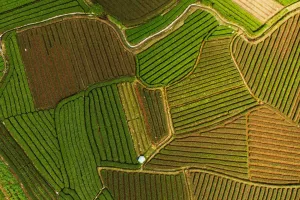The UK has a total land area of 244,100 square kilometers, a total population of 64.1 million, a gross domestic product of US$2.94 trillion, and a per capita of about US$45,600, making it the sixth largest economy in the world and the third largest within the European Union.
With 17.24 million hectares of agricultural land, including 6.278 million hectares of arable land and 9.755 million hectares of grassland.
The UK is blessed with natural conditions for agricultural development.
The UK agricultural population is about 476,000, accounting for 1.6% of the total labor force in society.
Although the total agricultural output value is about US$17.64 billion, accounting for only 0.6% of the GDP.
The government still attaches great importance to agricultural and rural development, with the European Union's Common Agricultural Policy as the lead, and continues to promote agricultural modernization to a higher level.
In fact, there are many agricultural products produced by UK farms. In general, the main crops grown on UK farms are wheat (the most widely grown crop on arable land in the UK), barley, oats, potatoes, sugar beets (the UK is the fifth largest producer of sugar beets), vegetables, oilseed rape, and fruit.
Different types of agricultural products are produced in different regions of the UK.
This is mainly influenced by state subsidies and climate (especially sedimentation and temperature).
The type of soil is to a certain extent close to the market demand.
Farms in upland areas are generally engaged in sheep farming. Farmers in flat areas are expected to carry out crop production, while wet/warm areas carry out milk production.
Some areas of the UK have soils particularly suited to crop farming, while others are used for raw, sheep, and poultry farming.
In the southwest of England, the abundance of pasture is ideal for dairy farming.
In the southeast of England and the Scottish Lowlands, farmers grow cereals, potatoes, and sugar beets.
In the eastern part of England (Eastern Anglia), wheat, barley, and vegetables are grown on a large scale in this part of the country.
Agricultural activities in Britain are carried out mainly on farms. British farms bring significant economic benefits to the British economy.
The total area of UK farms is 187,000 hectares, which is about 77% of the total area of the UK (excluding inland waters).
Farms in the UK have changed considerably in the last 30 years.
In the past, farms employed many people to carry out farming activities, but now, farms are equipped with a large number of machines.
So that just a few people can manage and operate huge farms of thousands of hectares.
About 60% of the UK's food needs are supplied by farms, even though they employ only 1.4% of the national workforce.
British agriculture is under pressure to transform itself at the moment.
Farmers under pressure need to adopt more environmentally friendly methods of farming, such as organic farming.
Organic farming does not use man-made chemicals, so it does not damage the environment or threaten human health.
Its popularity has grown in popularity in recent years.
Agriculture in the UK is in harmony with the environment, with lush greenery, meadows, farmland and trees everywhere, and picturesque cities and villages.
In fact, the development of greening in Britain is also a gradual process.
There was serious environmental pollution around the 1950s, but after more than 30 years of comprehensive management, it improve in the 1980s.


